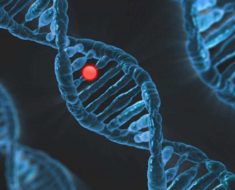Engineers at Duke University have developed a device that uses sound waves to separate and sort the tiniest particles found in blood in a matter of minutes. The technology is based on a concept called “virtual pillars” and could be a boon to both scientific research and medical applications.
Tiny biological nanoparticles called “small extracellular vesicles” (sEVs) are released from every type of cell in the body and are believed to play a large role in cell-to-cell communication and disease transmission. The new technology, dubbed Acoustic Nanoscale Separation via Wave-pillar Excitation Resonance, or ANSWER for short, not only pulls these nanoparticles from biofluids in under 10 minutes, it also sorts them into size categories believed to have distinct biological roles.
The results appeared online November 23 in the journal Science Advances.
“These nanoparticles have significant potential in medical diagnosis and treatment, but the current technologies for separating and sorting them take several hours or days, are inconsistent, produce low yield or purity, suffer from contamination and sometimes damage the nanoparticles,” said Tony Jun Huang, the William Bevan Distinguished Professor of Mechanical Engineering and Materials Science at Duke.
“We want to make extracting and sorting high-quality sEVs as simple as pushing a button and getting the desired samples faster than it takes to take a shower,” Huang said.
Recent research indicates that sEVs are composed of several subgroups with distinct sizes (e.g., smaller than 50 nanometers, between 60 and 80 nanometers, and between 90 and 150 nanometers). Each size is believed to have different biological properties.
Source: Read Full Article





